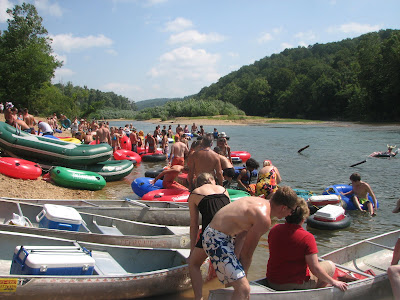
A friend asked me why I wrote "a zombie novel".
I'll be damned if I can tell you exactly why, but I can think about it, I told him.
Here, then, are my thoughts.
For some reason, the concept of zombies is about as scary as it gets for me, when it comes to horror fiction. For one reason, it transcends the supernatural and passes into the realm of the possible, if not exactly the probable. Like HP Lovecraft's fiction, it could--on purely a technical basis--be an analog to something far more likely. The zombies stand in for so many types of fears on so many levels that it's quite difficult to quantify them.
The first time I saw a zombie movie it frightened the crap out of me. That film was George A. Romero's DAWN OF THE DEAD. The theme of rampant consumerism was not lost on me, and the ideas of alienation also caused me to be far more effected by the film than I might otherwise have been. As I've said before, George A. Romero's concept of the recently dead returning to life to mindlessly consume the living just pushes so many buttons that it is, to me, the ultimate horror theme. There's never been anything quite like it.
In recent years there has been an explosion in the popularity of zombie fiction. Initially I found this popularity to be a very strange anomaly and it didn't make a whole lot of sense to me. One could argue when it began, but some of the early examples of the current wave were Phil Nutman's WET WORK and Len Barnhart's REIGN OF THE DEAD. Before that, about the only time I had seen Romero-esque concepts at work in fiction were in the adaptations of his first few films, NIGHT OF THE LIVING DEAD and DAWN OF THE DEAD, and the spinoff RETURN OF THE LIVING DEAD, and the John Skipp and Craig Spector-edited anthology BOOK OF THE DEAD.
After first Nutman's WET WORK and then Barnhart's REIGN, the floodgates, it seemed, were opened. In recent years a whole slew of zombie novels hit the bookshelves, among them the work of David Wellington, Brian Keene, and others. An entire cottage industry emerged in the form of Jacob Kier's Permuted Press. And comic book publishers got into the act with THE WALKING DEAD, MARVEL ZOMBIES, and the much earlier DEADWORLD. And then followed zombies on the New York Times best seller list with WORLD WAR Z by Max Brooks. Zombies had arrived, big time.
All during this period I had entertained the idea of writing a zombie novel. The idea would come and fade and reappear. And during these days I would cruise the Internet looking at various fan sites devoted to zombie fiction. And, slowly, a disturbing trend emerged:
A lot of zombie fiction fans were right wing zealots. They were into guns and ultra-conservative politics and, most disturbingly, they were largely of racist orientation.
The whole zombie scene seemed to be dominated by xenophobes, for whom the zombies had become, in their minds, the blacks and Mexicans and Jews and gays and outlanders they so feared and hated. I lost track of the number of references to various hate-induced slang I would see as I perused these fan sites. In the more polite and politically correct sites I would still encounter it in the form of mildly veiled terminology and in the comments later deleted by the board masters.
So I backed away from the zombie scene for a bit and tried to digest this information and wonder why this form of fiction would appeal to guys like that. Why, when Romero himself had gone so far out of his way to deliver anti-racist messages, was it that his original concept had been hijacked to allow racist garbage to accumulate there? Looking at some of the zombie books that were selling well, I realized that there was just a hairsbreadth difference between most of those and the likes of such things at THE TURNER DIARIES. Simply put, the racists among us had decided that the zombies represented the targets of their hatred. The humans were the pure Aryans fighting valiantly against the tide of "mongrel races".
Fuck.
I backed away still further. I wanted nothing at all to do with that stuff. I stopped reading the zombie books and stopped viewing zombie movies, even with a critical eye. Racism is as low as it gets, and I avoid that crap whenever I see it oozing.
But, after a while, the urge to work within the boundaries of the zombie mythology began to bug me. The urge to attempt such a project was still there and still itching to get out. My agent had mentioned to me that zombie novels were selling and that if I wanted to tackle such a book he should be able to find a market willing to look at it. So I chose that as something to do and began working at it, endeavoring to create something that would deliver a message that was, if anything, anti-racist and anti-fascist.
And that's why I wrote THE LIVING END: A ZOMBIE NOVEL (with Dogs).

















































